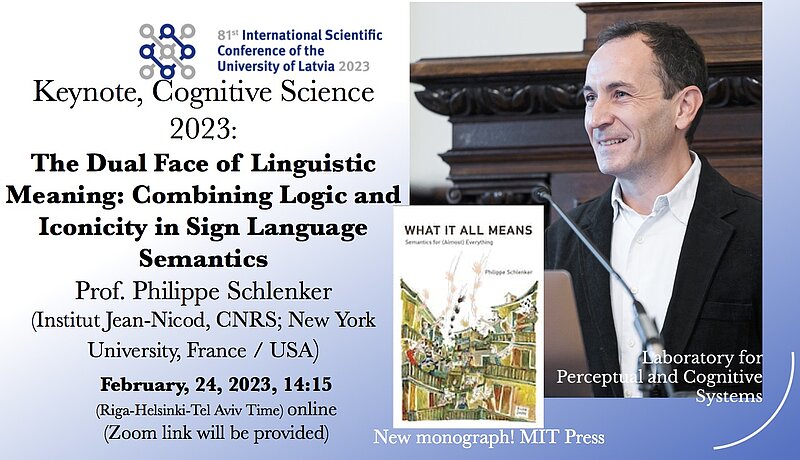The Dual Face of Linguistic Meaning:
Combining Logic and Iconicity in Sign Language Semantics
Philippe Schlenker (Institut Jean-Nicod, CNRS; New York University)
Abstract
It has long been accepted that sign language (i) employs the same logical structures as spoken language (occasionally making its abstract components overt), and simultaneously (ii) makes extensive use of iconicity. But the articulation between these two modules has only been discussed piecemeal. Based on new data from American Sign Language (ASL), we argue that natural language semantics must be extended with a pictorial component, one that makes crucial use of the semantics of pictures recently developed by Gabriel Greenberg and Dorit Abusch. The result, which we call ‘iconological semantics’, offers a new integration between logical and iconic semantics, as well as a new perspective on the foundations of meaning in natural language.
A key argument for iconological semantics lies in some constructions, called classifier predicates, which are lexically specified as having a pictorial semantics. Just like for a picture, their truth-conditional contribution is evaluated with respect to a viewpoint. In ASL, the viewpoint is determined by a viewpoint variable, which may be left free or existentially quantified, in which case it yields a remarkable interaction with logical operators. We also show that the pictorial semantics of classifier predicates has consequences for their syntax. Classifier predicates often override the basic SVO order of ASL, yielding preverbal objects instead, but crucially this is only true to the extent that the denoted object is typically visible before the action (e.g. x ate up y). This is in essence because the classifier predicate creates a visual animation of the denoted scene. When the object is visible only *after* the action (e.g. x spit out y), an SVO order is regained. In sum, the proposed framework accounts both for the syntax and semantics of classifier predicates, as well as for their integration within larger Logical Forms. (This analysis can be extended to offer an account of some viewpoint-sensitive gestures in spoken language; and it can be refined by adopting a more accurate view of the 3D and dynamic contribution of classifier predicates and iconic gestures.)
Manuscript (January 2023; in part technical)
https://ling.auf.net/lingbuzz/007048
Presentation
Optional background readings
Non-technical reading
Chapter 2 of What it All Means (MIT Press 2022)
Technical readings

 Academic Centre
Academic Centre